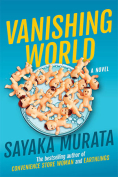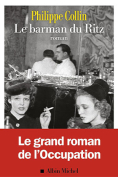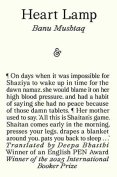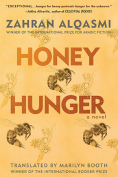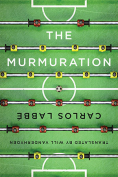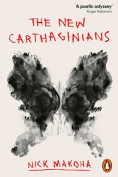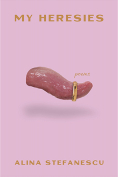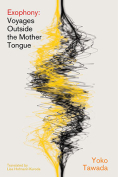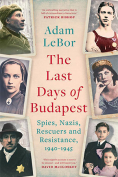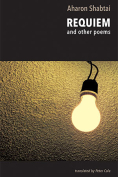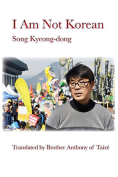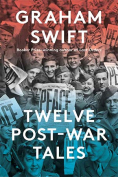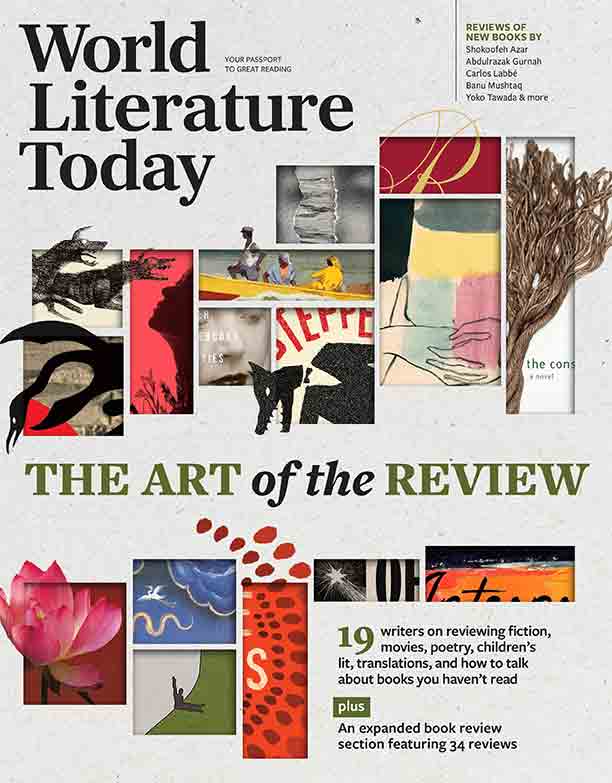The Last Days of Budapest: Spies, Nazis, Rescuers and Resistance, 1940–1945 by Adam LeBor
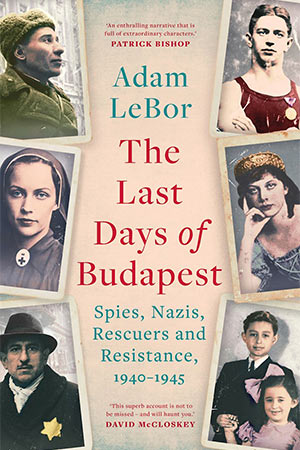
New York. Apollo. 2025. 502 pages.
Adam LeBor is the author of several thrillers set in Budapest, where he served for many years as the correspondent for such English newspapers as The Times and Financial Times. In his new book, he appears as a historian as well as chronicler of a set of remarkable human stories of survival in wartime Budapest. The years covered by LeBor are full of extraordinary events, set out in his four subtitles: mass murder and occasional bargaining in Nazi-controlled territories; spying from Istanbul all the way to Budapest; foreign diplomats rescuing persecuted Jews; and organized resistance to Himmler’s henchmen. The last was less common in Hungary than in Poland and centered only on Budapest, but LeBor identifies some young Zionists who fought back against the terror of the Arrow Cross–type fascists who inundated the Hungarian capital in the last months of 1944.
As the root cause of Hungary’s wartime tragedy, LeBor rightly identifies the obsessive insistence on the territorial revision of one of the peace treaties that ended World War I, the Treaty of Trianon (1920), which forced large numbers of ethnic Hungarians to live in new, chauvinistic states. In the 1920s revision was but a daydream, but with rise of the Third Reich and the expansionism of fascist Italy by 1938, Hungary was on its way to forging a fateful alliance with these powers. The Munich Agreement brought about the first revision ending in the dismemberment of Czechoslovakia. Between 1939 and 1941, Hungarian prime minister Pál Teleki tried the impossible: to keep Hungary out of the war while regaining territory from Romania with German and Italian assistance. Teleki’s only real succcess was the occupation of Subcarpathian Ruthenia and the establishment of a Polish–Hungarian border that allowed tens of thousands of Polish soldiers and officers to escape through Hungary to Yugoslavia and from there to the West. Hungary eventually declared war on the Soviet Union and on all the Allies, including the United States, in August 1941.
What makes LeBor’s book particularly valuable is the way he deploys sources that are often forgotten or neglected. He lays bare the links between the perpetrators of the savage White Terror of 1919–20 and and the fascist murderers of 1944, and he also notes the fact that of the members of the Hungarian Arrow Cross Party, only 27,000 were sentenced after the war (in the 1939 elections, 600,000 Hungarians voted for the party of Szálasi and other extreme right-wing parties). As for the resistance, he highlights acts of bravery by pro-Polish Hungarian aristocrats such as the Andrássys and the Odescalchis and singles out two women, whose defiance of the Nazis ought not be forgotten: the Polish fighter Krystyna Skarbek and the Hungarian Jewish heroine and member of the British army, Hannah Szenes. The chapter on rescuers includes a great deal of information on the rescue operations of the skillful Italian/Spanish diplomat Giorgio Perlasca, while among the stories of survivors LeBor also relates the escape of Robert Lichtenstein-Ligeti, his father-in-law.
Apart from the occasional typo in Hungarian surnames, LeBor’s book has one glaring omission: he does not discuss the assistance provided by the Christian churches to Jews and people of Jewish origin. The Hungarian Reformed Church set up a rescue committee (the Good Shepherd) as early as 1942, and pastors Albert Bereczky and József Éliás produced false documents for and gave shelter to a large number of people. As for the Catholics, while Cardinal József Mindszenty protested to the government only in 1944, the “Sisters of Social Service” founded by Margit Slachta saved the lives of about two thousand Jewish women (including the wife of the poet Miklós Radnóti) and even had its own martyr in the person of Sára Salkaházi, who was beatified in 2006. The Christian churches’ role in the rescue of Jews was documented by Péter Várdy as long ago as the 1980s, so it is difficult to understand why these facts were not mentioned in this otherwise thoroughly researched book.
George Gömöri
SSEES/UCL London
